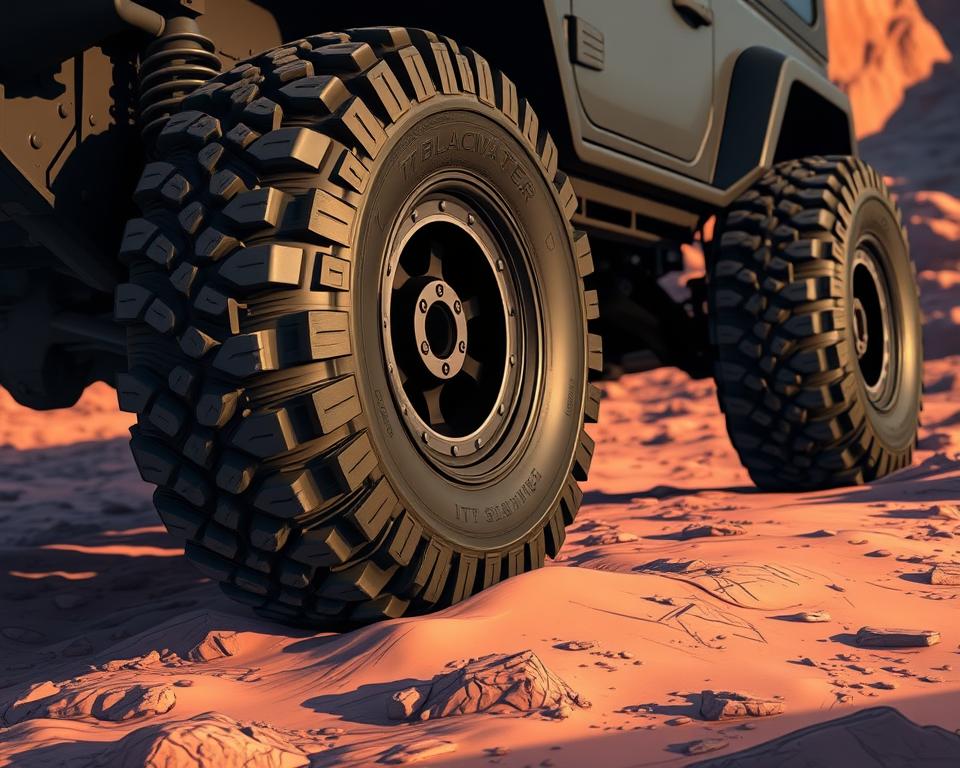Complete ATV Off-Road Safety Prep Guide
Were you aware nearly some 450,000 ATV-related injuries are treated in U.S. emergency rooms each year? This alarming figure highlights the need for safety and preparedness in off-road adventures. Use this Essential ATV Off-Road Checklist to ensure every ride is safe and fun. From boulder-strewn tracks to shifting sands—it’s got you covered. Equipped with top safety gear plus cheap ATV parts necessities, you’ll ride safer and with more confidence.
Primary Conclusions
- Start with safety: follow this checklist for full prep.
- Don’t hit the trail without this ATV safety gear list.
- Keep your ATV running smoothly with routine care.
- Stay fueled and hydrated for peak performance.
- Master your GPS and maps to stay on track.
- Pack layers and waterproofs for all conditions.
- Always carry essential tools and recovery kits for on-trail repairs and emergencies.
Understanding the Importance of Safety Gear
Safety is non-negotiable for every off-road trip. ATVs deliver thrills—and risks. Safety gear is essential for protecting riders from accidents and injuries. A full gear check means a safer outing.

Essential Protective Gear
Maximizing protection involves several key items:
- Helmets: Choose DOT-approved helmets to prevent head injuries.
- Goggles: Block dirt and grit with quality goggles.
- Gloves: Wear durable gloves for better grip and hand protection.
- Footwear: Wear sturdy boots that cover the ankles to prevent injuries.
- Protective Armor: Wear armor to guard your torso on rough trails.
- Neck Braces: Support your neck to prevent serious injury.
Emergency Preparedness
Emergency preparedness is just as important as protective gear. Your emergency bag could be your best friend. Key items to include are:
- First aid kit
- Multi-tool
- Tire repair kits
- Portable air compressors
- Emergency blankets
- Whistles
- Matches
ATV Equipment for Optimal Performance
Gear choices affect how well your ATV runs. Knowing the must-have ATV equipment ensures you’re ready for any journey. Routine checks keep your ATV working its best.
Must-Have ATV Equipment
- All-Terrain Tires: Terrain-specific tires keep you glued to the track.
- Cargo Systems: Use efficient storage compartments for tools and emergency supplies, ensuring quick access when needed.
- Quality Fuel Tank: A high-quality fuel tank prevents leaks and ensures you have enough fuel for extended rides.
- First Aid Kit: Prepare for emergencies with a well-stocked first aid kit for immediate attention if needed.
Regular Maintenance for Longevity
Routine care keeps breakdowns at bay. Regular inspections should encompass:
- Checking air filters to keep the engine running smoothly.
- A well-lubed chain spins quietly and reliably.
- Test your brakes on every pre-ride check.
This ATV maintenance checklist is essential for keeping your vehicle in peak condition and ready for adventure.
The Essential ATV Off-Road Checklist
Good prep keeps surprise breakdowns away. A quick check prevents major headaches. Each pre-ride inspection step requires attention to detail. A thorough pre-ride assessment is key to a safe outing.
Pre-Ride Inspection Basics
Your pre-ride look-over sets the tone for safety. Find and fix small problems before they grow. Key elements to check include:
- Tire pressure and tread condition
- Fluid levels such as oil and fuel
- Brakes and controls functionality
- Operational lights and horn
- Chain or driveshaft integrity
T-CLOC Inspection Method
Use T-CLOC for a thorough pre-ride check. It covers Tires and Wheels, Controls, Lights, Oil and Fuel, and Chain/Driveshaft. This method ensures all critical areas are covered:
| Inspection Area | Checklist Items |
|---|---|
| Tires and Wheels | Check tire pressure, inspect tread depth, look for damage |
| Controls | Test brakes, throttle, and clutch for smooth operation |
| Lights | Ensure headlights, brake lights, and indicators are functioning |
| Oil and Fuel | Check oil level, inspect for leaks, and fill fuel tank |
| Chain/Driveshaft | Examine for wear, proper tension, and lubrication |
A quick T-CLOC saves you big trouble later. Prevent roadside repairs with a fast check.
Hydration and Nutrition for Long Rides
Don’t underestimate water and snacks on extended outings. Always carry more water than you think you’ll need. Hydration packs make water access easy on the trail. The right snacks are also key for maintaining stamina on the trail.
Importance of Staying Hydrated
Hydration is critical for ATV riders to stay alert and capable throughout their journey. A hydration pack with sip tube makes it easy. Hydration bladders track consumption at a glance.
High-Energy Snacks to Pack
The right fuel makes the ride smoother. Choose items that won’t spoil in heat. Some ideal choices include:
- Protein bars
- Nut mixes
- Dried fruits
- Beef jerky
Snack smart for sustained energy. Variety prevents taste fatigue and keeps you powered.
Navigation Tools for Off-Roading Adventures
Stay on course with proven navigation aids. Off-road navigation tools are invaluable for staying on track, no matter the terrain.
Advanced GPS Systems
An advanced GPS system is a must for off-road adventures. Choose units with rugged builds, offline charts, and extended runtime. Garmin, TomTom, and others make GPS units built for bumps and dust.
Traditional Navigation Aids
Don’t ditch old-school compasses and maps. Maps won’t die when batteries do. Wind your own way with map and compass skills. Blend modern and classic for ultimate wayfinding.
Communication Equipment for Safety
When phones fail, two-way radios deliver. Using reliable ATV communication gear is vital for safety. Knowing you can call for help reduces stress.
Group rides need reliable radios. Pick units with strong, clear signal range. They allow for real-time updates on any changes or hazards. When choosing two-way radios, look for models with:
- Weatherproof construction to resist the elements
- Extended run-time for extended trips without needing a recharge
- Multiple channels for clear communication without interference
Adding ATV communication gear to your adventure prep is essential. They keep everyone coordinated and secure. When reception is zero, your radio still works. Clear comms = better rides.
Self-Rescue Gear for ATV Riders
Every ATV rider should be ready for unexpected situations on the trail. With the right kit, you’ll tackle obstacles solo. A well-prepared rider not only improves their experience but also boosts safety for all.
Winches and Recovery Kits
Winches are vital for self-rescue, helping pull your ATV from tough spots. A winch paired with a detailed ATV recovery kit is even more effective. Recovery kits usually include:
- Tow straps
- D-rings
- Recovery boards
- Gloves
Practice recovery techniques before you need them. With quality ATV recovery kits, you can overcome mud, rocks, or other obstacles and continue your journey.
Trail Recovery Essentials
Winches are just the start; several trail recovery essentials are also critical for off-road adventures. These include:
| Equipment | Purpose |
|---|---|
| Recovery Straps | Used for towing or pulling ATVs out of tight situations. |
| Shovel | Helps clear obstacles and dig out vehicles when stuck. |
| Traction Mats | Provides grip under tires in muddy or slick conditions. |
| Portable Air Compressor | Enables quick tire inflation after deflating for better traction. |
Arming your ATV with the right self-rescue gear ensures you can handle any obstacles. Skills plus gear equal top-tier off-road safety.
Staying Adaptable: Preparing for Weather Changes
Expect the unexpected in the outdoors. It’s vital to be ready for sudden changes to stay safe and enjoy the ride. Pack for every possible forecast.
Dress in layers to stay comfortable. Begin with a moisture-wicking base layer to manage sweat. Mid-layers trap heat and pack small. Finish with a rain-and-wind jacket. Adapt to cold, heat, or storms easily.
Weather-Appropriate Clothing
- Rain Shells: A must-have for sudden downpours.
- Breathable Pants: Stay cool and dry with breathable pants.
- UV Gear: Lightweight, long-sleeved shirts and wide-brimmed hats safeguard against harmful UV rays.
- Insulated Gloves: Keeps hands warm and functional during colder rides.
Quality weather gear is a must for a great off-roading experience. Comfortable riders ride longer and safer.
Tools for On-Trail Repairs
Your toolkit can make or break your day on the trail. Don’t skimp on repair gear. Fix flats and loose bolts in minutes.
Must-Have Tools and Kits
No ride is complete without a toolkit. Pack only the essentials—no junk. Critical ATV repair tools might include:
- Tire irons for changing flat tires
- Pliers for gripping and cutting
- Wrenches for various sizes of bolts and nuts
- A multi-tool for versatility
- Spare items such as spark plugs and electrical wire
- Duct tape for quick fixes
Be your own mechanic on the trail.
Basic Emergency Supplies
Tools alone won’t save you—bring these extras. These supplies help ensure your safety in challenging situations:
- First aid kit for injuries
- Flashlight with extra batteries for night-time visibility
- Emergency whistle for signaling assistance
- Reflective triangles or flares to warn other riders
- Water and high-energy snacks for sustenance
Be ready for the unexpected. Your safety net on the trail.
The Bottom Line
Well-planned rides are the best rides. Using the Essential ATV off-road checklist and acquiring gear from trusted sources is key. Ride confidently on every surface.
Gear up fully and ride securely. Plan smart to ride hard and safe. Focus on fun, not fears.
Gear up, stay sharp, and savor every off-road second. Your ride’s story begins with good prep. Check this list, then conquer nature.
Frequently Asked Questions
What belongs on an ATV gear list?
Your ATV safety gear checklist should include a DOT-approved helmet and goggles. Add gloves, boots, and torso protection. Consider a neck brace for extra safety. Remember to pack an emergency kit with a first aid kit and multi-tools for preparedness.
Tips for ATV upkeep?
To maintain your ATV, regularly check air filters and lubricate the chain. Always test your brakes before a ride. A consistent maintenance routine extends your machine’s life and keeps it ready for off-road adventures.
What is included in T-CLOC?
The T-CLOC inspection method covers several key areas. It includes checking Tires and Wheels, Controls, Lights, Oil and Fuel, and Chain/Driveshaft. This ensures your ATV’s critical components are in working order before hitting the trails.
Recommended hydration levels for trail rides?
Pack extra hydration for safety. Accurately estimating hydration needs prevents fatigue, which is critical during long rides. Hydro packs let you drink without stopping.
Must-have navigation tools for ATV trips?
Use an off-road GPS unit. Backup with maps and a compass ensures you never get lost.
Why is communication important when off-roading?
Radios prevent isolation when cell fails. Areas with limited cell service highlight the need for reliable two-way radios.
What self-rescue gear should every ATV rider carry?
Pack a winch plus full recovery gear. Include straps, shackles, and traction boards.
How can I prepare for sudden weather changes while off-roading?
To prepare for sudden weather changes, wear layered clothing that can be adjusted as temperatures change. Waterproof gear is necessary to stay dry during unexpected rain. Wear sun-blocking fabrics and hats.
Which trailside tools matter most?
A compact tool set lets you fix flats and loose bolts. Include tire irons, pliers, wrenches, a multi-tool, and spare parts like a spark plug.


